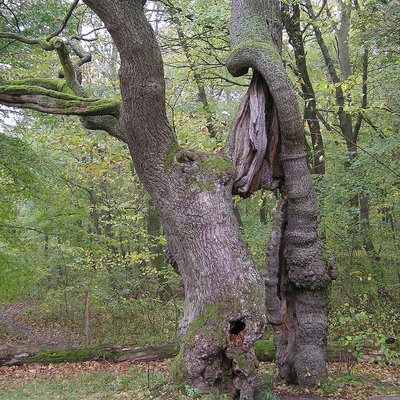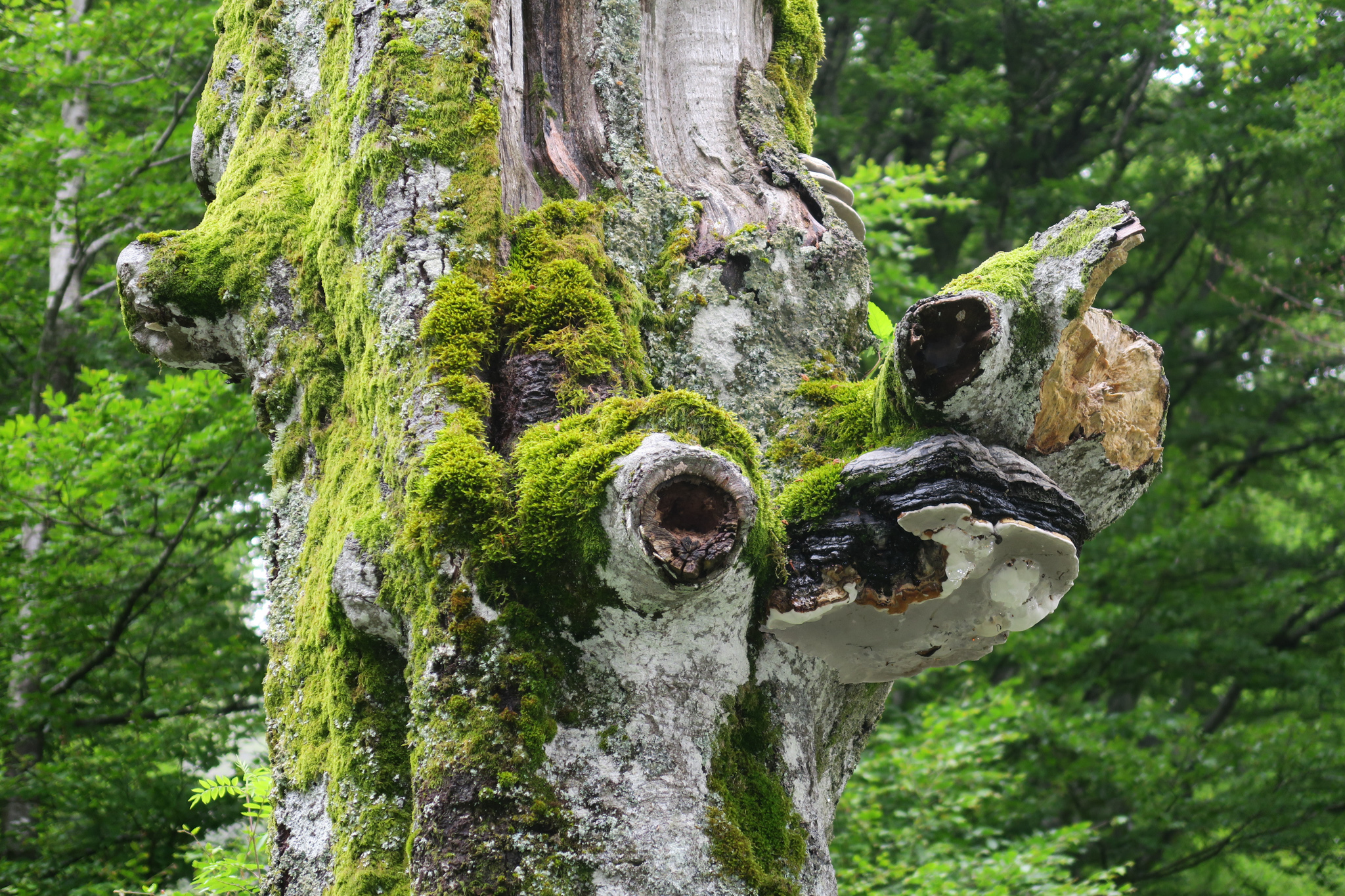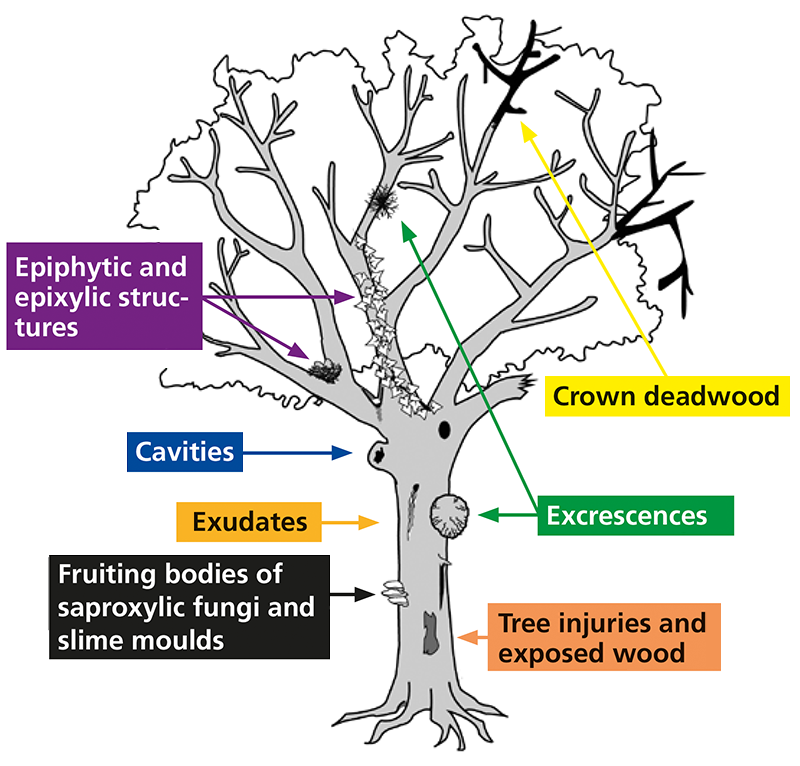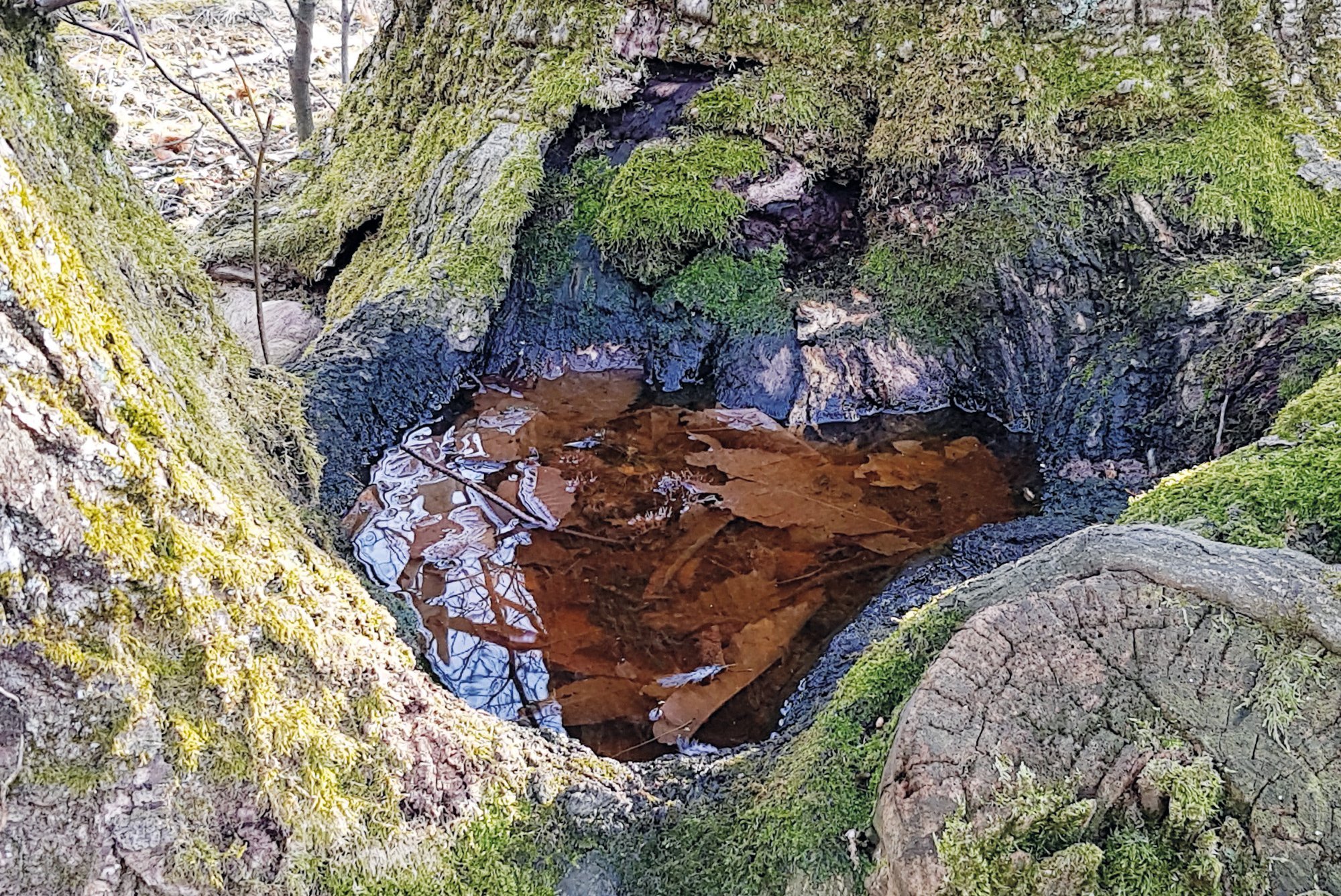
Fig. 1. An exemplary habitat tree! Photo: Rita Bütler
The vast majority of European forests are managed, and they provide services for humans as diverse as timber production, protection against natural hazards and recreation. Forests also play an important role in preserving biodiversity. However, natural forest development in commercial forests is very limited. The focus of management is usually on the establishment and growing phases, while the ageing, decay and regeneration phases are kept as short as possible or are skipped completely. There is often, therefore, a lack of old trees and dead wood. (fig. 1).
Habitat trees – tree-related microhabitats
A habitat tree is a living or dead standing tree that bears at least one microhabitat. The term microhabitat refers to very small-scale or specially delimited habitats. Tree-related microhabitats (often abbreviated as TreMs in the following) are clearly delimited structures supported by the tree, on which many different, sometimes highly specialised animal, plant, lichen and fungal species depend for at least part of their life cycle (fig. 2). They are produced, for example, by injuries caused by rockfall, lightning or woodpecker activities. TreMs can also be elements for which the tree merely serves as a support, such as nests, ivy or lianas. How long the development of tree-related microhabitats takes is highly variable: from a few milliseconds for the formation of a lightning scar to several decades for the formation of a large rothole. The duration during which a TreM is usable for an associated species also varies widely.
Need for a standardised methodology
Until recently, TreMs and habitat trees were not uniformly assessed and measured. The definition of habitat trees and the criteria for their selection tend to vary depending on the study and inventory. Under the leadership of the European Forest Institute (EFI), experts from all over Western and Central Europe initially developed a TreM catalogue. Since then this catalogue has been further developed and published (Larrieu et al. 2018).
The standardised typology of tree microhabitats is hierarchically structured (fig. 3). The first level consists of seven forms based on features relevant to biodiversity. These seven forms are further divided into 15 groups in a second level and 47 different types in a third level (fig. 3). Thanks to its hierarchical structure, the typology is useful for various purposes. For the quick selection of habitat trees when marking timber, the seven forms may be sufficient. For forest inventories or monitoring purposes, we recommend using either the 15 groups or the 47 types. In order to investigate the relationships between species and TreMs in forest ecological research, the 47 types can be further subdivided according to additional criteria.
The standardised method is also helpful for monitoring, forest certification and performance review of measures to promote biodiversity in forests, as adopted by the Swiss Federal Council in its Forest Policy 2020 and in the Swiss Biodiversity Strategy.
Fig. 3. Recommended typology of tree-related microhabitats according to Larrieu et al. (2018), divided into 7 forms, 15 groups and 47 types. Drawings: C. Emberger, L. Apfelbacher/D. Kraus and reproductions from Kraus et al. 2016.
How are habitat trees recorded?
Tree-related microhabitats are often small. For example, it is difficult to discover a lesser spotted woodpecker breeding cavity at a height of 20 metres with the naked eye. We therefore recommend working with binoculars. In addition, recordings performed when the trees are leafless are easier and more accurate. Subjective perception also plays an important role in the accuracy of TreM recordings. Therefore, clear instructions and a simple and unambiguous method are essential. Ideally, the recordings are made in teams of two, although an experienced person can also make complete recordings alone. Each tree is inspected from the base of the trunk to the crown. It is best to go around the tree once for the lower part of the trunk and a second time, at a greater distance, for the upper part and the crown. A careful observation of a tree requires between one and three minutes, depending on the size of the tree, number of TreMs, slope and level of detail of the inventory. The minimum tree diameter must be determined appropriately. For research and monitoring purposes we recommend a calipering limit of about 10–20 cm. In the context of routine forest inventories, it is advisable to adapt this limit to the usual threshold. For financial incentives, the quality criteria and minimum diameters defined by the authorities apply.
The conservation and promotion of habitat trees should be an integral part of all forestry activities, such as silvicultural care, thinning and logging. Consequently, specific information on the selection, number and distribution of habitat trees should be included in the operational guidelines of forest enterprises.
Recommendations for forest planning
- Designate set-aside areas, dedicated to natural dynamics, where trees can age and complete their entire life cycle. Natural forest reserves and old-growth forest islands are two instruments that are also suitable for the conservation of habitat trees in high spatial density. Such areas should be permanently retained in order to have all forest development phases represented. Old-growth forest islands are useful as stepping stones between larger protected areas and should be larger than 10 hectares whenever possible.
- For a functional network of typical natural forest structures, in addition to the areas without intervention, managed stands should include many habitat trees.
- Promote mixed stands with secondary tree species, as the different tree species have different tree-related microhabitats. In general, short-lived pioneer tree species quickly form TreMs and contribute greatly to their diversity.
- For each silvicultural intervention, its impact on tree-related microhabitats must be assessed and the habitat tree candidates must be identified, i.e. trees with the potential to bear TreMs in the future. By positive selection of the value-trees (elite trees), habitat trees are preserved, as there is no reason to remove them due to their low economic value. Habitat tree candidates should be left in young forest stands from the thinning onwards and marked. Due to the negative selection of vital trees with undesirable gross malformation, which was common in the past in the care of young growth, the development of TreMs was often limited.
Recommendations in the forest stand
- In managed stands, aim for a minimum of six to ten habitat trees per hectare to mitigate the impact of forestry on organisms dependent on tree-related microhabitats.
- When selecting habitat trees, focus on TreM-bearing, old or large trees. Trees that bear TreMs at an early age will most likely develop more TreMs as they get older. In general, the diameter correlates positively with the number of TreMs and the largest trees have the greatest variety of TreMs. As a rule, all possible types of TreMs can be obtained by selecting habitat trees with diameters > 50 cm for beech and > 65 cm for silver fir. From a diameter of about 90 cm (beech) or 100 cm (silver fir), trees bear significantly more TreMs than thinner trees.
- Preserve also pioneer and co-dominant secondary tree species, as they rapidly develop TreMs.
- Aim for a combination of grouped and scattered habitat trees.
- Preserve various TreMs, with special attention to the rarest ones (fungal fruiting bodies on living trees, cracks and sap runs) and those with particularly long developmental periods (e.g. large rot-holes).
- Pay special attention to habitat trees at forest edges and along linear structures such as streams and pond or lake shores, as certain TreMs such as sap runs or cracks are more common there than in the interior of the forest.
- Preserve also snags, as they carry on average more TreMs than living trees and provide a large proportion of certain TreMs, especially fungal fruiting bodies and cracks.
- For habitat tree recordings use the typology of Larrieu et al. (2018), with the respective size limits (see fig. 3). Depending on the objective, 7 forms, 15 groups or 47 types of TreMs can be used.
- Mark habitat trees in the field and record their coordinates and other characteristics (diameter, tree species, TreMs) in order to secure and preserve them in the long term. This will also enable future local decision-makers to take these habitat trees into account in forest planning.
Field Guide to Tree-related Microhabitats
A Field Guide to Tree-related Microhabitats systematically describes these types. It also indicates recommended minimum inventorying sizes for each TreM and gives information about its frequency of occurrence and its replacement rate in the stand.
Literature
Further literature references used in the text can be found in the in the original publication (PDF) as well as in the Field guide to tree-related microhabitats.
- Bütler, R.; Lachat, T.; Krumm, F.; Kraus, D.; Larrieu, L., 2021: Know, protect and promote habitat trees. WSL fact sheet, 64. 12 p. Download PDF
- Bütler, R.; Lachat, T.; Krumm, F.; Kraus, D.; Larrieu, L., 2020: Field guide to tree-related microhabitats. Descriptions and size limits for their inventory. 58 p. Download PDF
You can order the printed publications free of charge from WSL:
WSL e-shop
Zürcherstrasse 111
CH-8903 Birmensdorf
e-shop@wsl.ch



